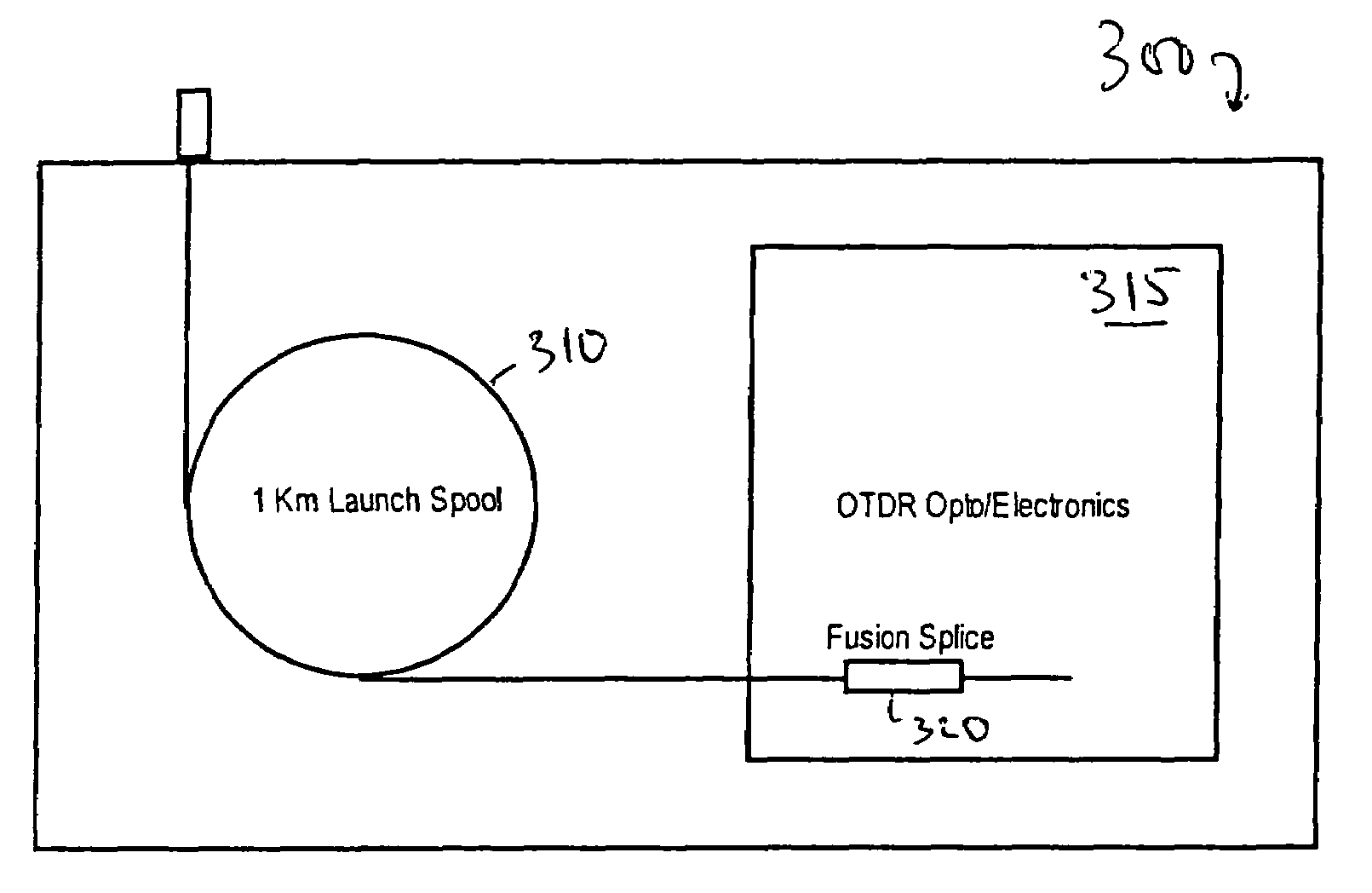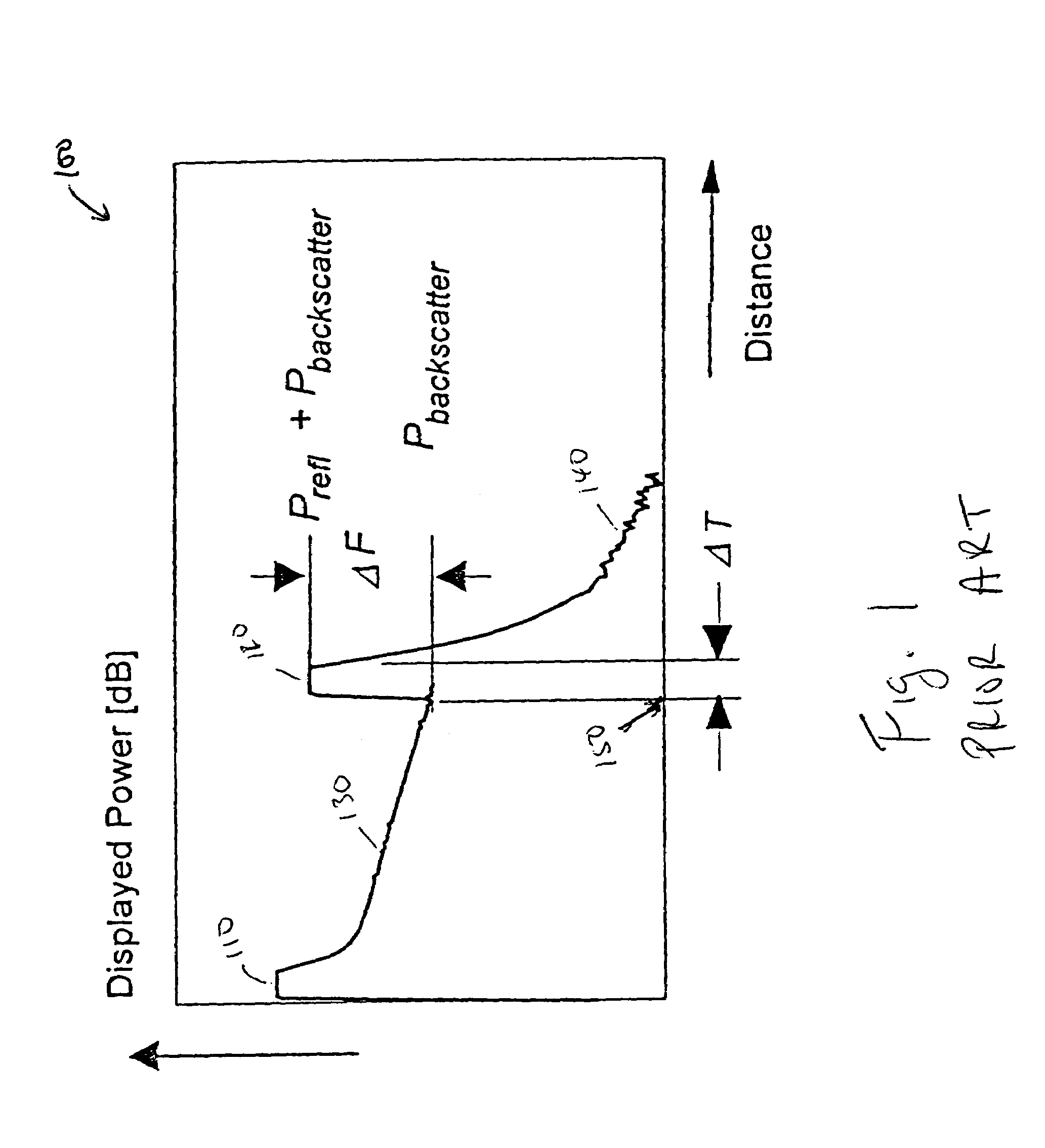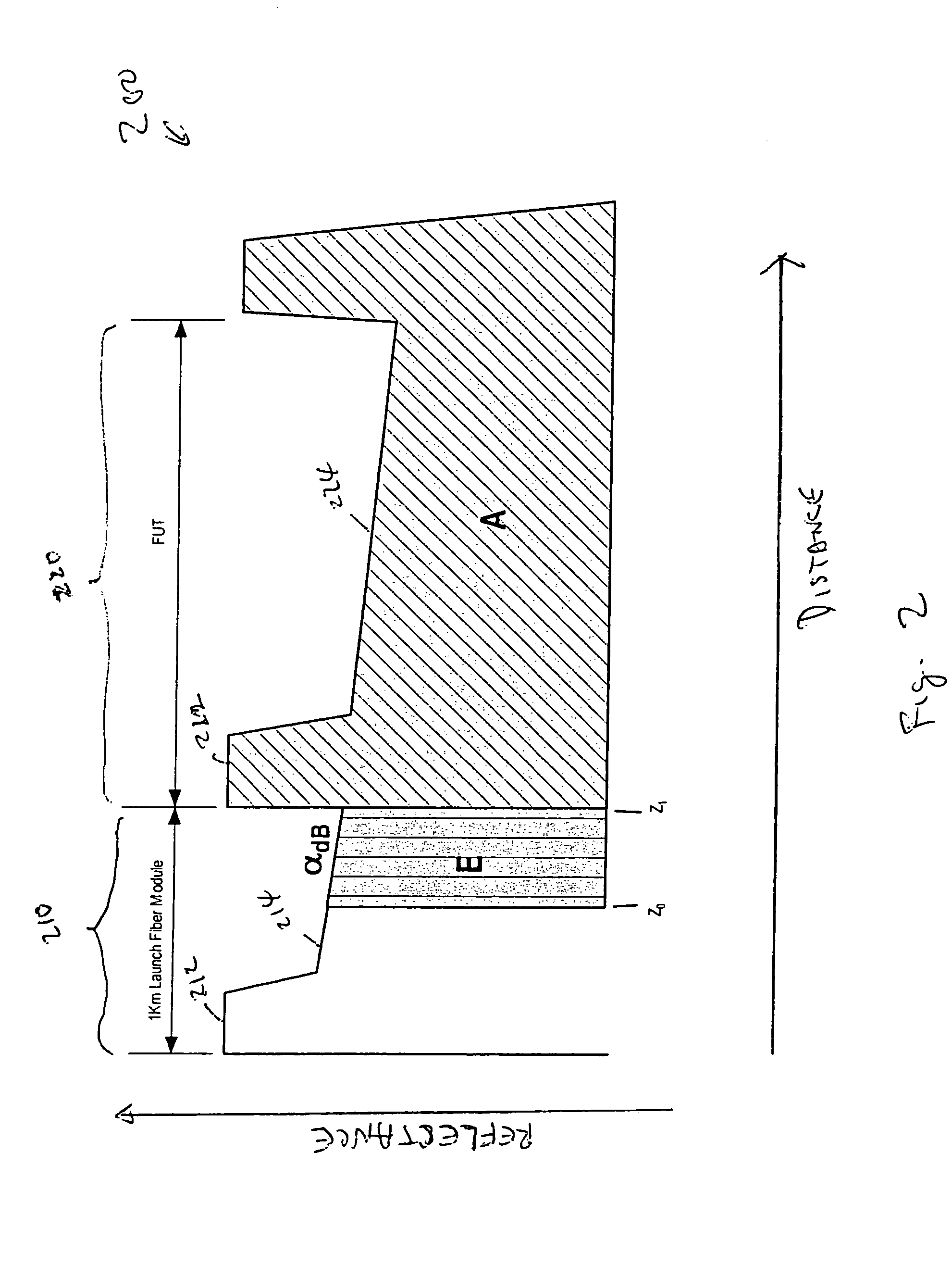Accuracy automated optical time domain reflectometry optical return loss measurements using a "Smart" Test Fiber Module
a technology of optical return loss and test fiber, applied in the direction of optical apparatus testing, instruments, structural/machine measurement, etc., can solve the problems of optical return loss, inability to accurately measure the properties of optical fibers, etc., to achieve suitable signal-to-noise ratio and eliminate saturation condition of detector modules
- Summary
- Abstract
- Description
- Claims
- Application Information
AI Technical Summary
Benefits of technology
Problems solved by technology
Method used
Image
Examples
Embodiment Construction
[0026]Light traveling along an optical fiber becomes attenuated as it travels along the fiber. Light is attenuated by a variety of different mechanisms, including absorption by the fiber, escaping from the fiber (due to imperfections or due to excessive bending of the fiber), Rayleigh scattering, and by Fresnel reflection (which occurs when there is a sudden change in the optical index (or index of refraction) of the material through which the light is traveling. Reflectance (or Fresnel Reflection) is the term used to refer to an optical loss mechanism involving reflection that takes place at a single component, such as the end connectors on the fiber under test (hereinafter “FUT”), or any mechanical connection within the FUT. The amount of reflection at a connector, break or mechanical splice depends on a number of factors, including how clean the break is; how much the index of refraction (hereinafter “IOR”) changes when the light leaves the fiber; and the connector polish. In fib...
PUM
| Property | Measurement | Unit |
|---|---|---|
| wavelengths | aaaaa | aaaaa |
| wavelengths | aaaaa | aaaaa |
| wavelengths | aaaaa | aaaaa |
Abstract
Description
Claims
Application Information
 Login to View More
Login to View More - R&D
- Intellectual Property
- Life Sciences
- Materials
- Tech Scout
- Unparalleled Data Quality
- Higher Quality Content
- 60% Fewer Hallucinations
Browse by: Latest US Patents, China's latest patents, Technical Efficacy Thesaurus, Application Domain, Technology Topic, Popular Technical Reports.
© 2025 PatSnap. All rights reserved.Legal|Privacy policy|Modern Slavery Act Transparency Statement|Sitemap|About US| Contact US: help@patsnap.com



